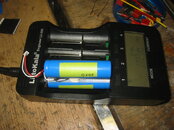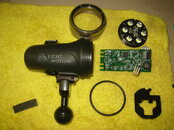fmerkel
Contributor
That's my thinking. The indicator (green to yellow to red to blinking red) is just some electronic circuit, as is the "it's dead, jim" light turn off function. What I did was re-calibrate the electronics, but if it restores the 'time on' that's all I want. I'm pretty sure the important part was taking the light down as much as possible before charging it.
Eventually it won't work and new batteries will be needed, but this did extend the working time.
Agree. If it's already dying, or appearing to be well down that path, you don't have a lot to lose.
Normally that kind of charge/discharge to end points works OK for NiMh, and just takes some life out of the lithium battery.
I have seen a couple of Li-on packs 'go bad'. When I pulled them apart the individual cells were good. The protection circuit was doing it's job but the cells had gotten WAY out of balance. The PCB was stopping the pack when the strongest cell got charged, and the weakest cell got discharged. This effectively crippled the pack.
PCB circuits generally DO NOT balance, they merely limit. There are higher end PCB circuits that limit and balance but I've never seen one in field use. They are much more expensive. (I think quality Li-on tools do use this arrangement).
I have a 2S2P (2 series, 2 parallel) Li-on canister light and I make packs with balance plugs, no PCB. If you know how to take care of Li-on it's a much better arrangement. I always know exactly what each cell is doing and it never gets out of balance with a balance charger.






